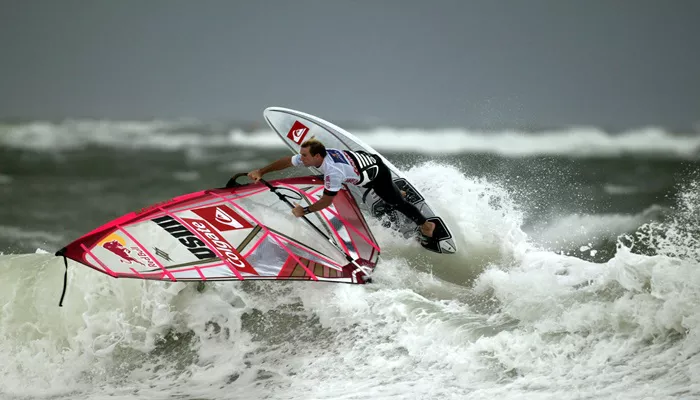Windsurfing is a dynamic and technical sport that combines elements of sailing and surfing. Among the many concepts and techniques that windsurfers use, STP (Sheet, Trim, and Pressure) is one of the most crucial. STP is a guiding principle that helps windsurfers optimize their performance, control, and efficiency on the water. This article will explore what STP is, how it applies to windsurfing, and how mastering it can improve your skills.
Understanding STP: Sheet, Trim, and Pressure
1. Sheet (S) – Controlling the Sail Power
Sheeting refers to how a windsurfer adjusts the sail to capture wind effectively. It involves:
Sheeting in – Pulling the sail closer to increase power and speed.
Sheeting out – Letting the sail out to reduce power, often used to slow down or depower in strong winds.
Proper sheeting is essential for:
Maintaining balance – Too much power in high winds can cause loss of control.
Speed management – Sheeting in generates acceleration, while sheeting out helps regulate speed.
Upwind and downwind sailing – The sail’s position determines how efficiently you can sail in different directions relative to the wind.
2. Trim (T) – Board and Sail Angle Optimization
Trim refers to adjusting both the board and sail angle to achieve maximum efficiency. Proper trim involves:
Body positioning – Keeping the weight centered and adjusting foot placement.
Sail angle control – Tilting the sail forward or backward for optimal wind capture.
Mast base positioning – Adjusting where the mast is positioned on the board for different sailing conditions.
Benefits of mastering trim include:
Better stability – Proper trim prevents the board from bouncing or sinking in choppy waters.
Efficient planing – Achieving smooth planing by balancing weight and sail power.
Improved upwind performance – Proper trim helps sail closer to the wind with less effort.
3. Pressure (P) – Distributing Force for Control
Pressure in windsurfing refers to the distribution of forces between the sail, board, and rider. Managing pressure correctly helps with:
Foot pressure distribution – Controlling power through front and back foot positioning.
Mast base pressure – Applying the right amount of weight on the mast to maintain control.
Harness and boom pressure – Using the harness to take the load off the arms and maintain a steady sailing posture.
Proper pressure management ensures:
Reduced fatigue – Efficient distribution of forces reduces strain on the body.
Better maneuverability – Adjusting pressure helps with turning, jumping, and carving.
Enhanced control in gusty conditions – Helps maintain stability and speed control when wind conditions change suddenly.
How STP Improves Windsurfing Performance
1. Mastering Speed Control
By understanding STP, windsurfers can fine-tune their speed depending on wind strength and water conditions. A balance between sheeting in and out, adjusting trim, and managing pressure allows for optimal acceleration and deceleration.
2. Enhancing Turning and Carving
Turns such as tacks and jibes rely heavily on STP. For example:
In a carve jibe:
Sheeting in helps enter the turn with speed.
Proper trim ensures the board stays stable.
Pressure adjustments guide the board through the turn smoothly.
In an upwind tack:
Sheeting out momentarily helps reposition the sail.
Adjusting trim aids in transitioning without losing balance.
Controlling pressure between front and back foot ensures a clean pivot.
3. Improving Upwind Sailing Efficiency
Going upwind requires a delicate balance of sail angle, board positioning, and foot pressure. By following STP principles:
Sheeting in helps generate power.
Trimming the board slightly on edge reduces drag and increases efficiency.
Applying back foot pressure helps the board track upwind without slipping sideways.
4. Handling Strong Winds and Gusts
In high winds, maintaining control is key. STP principles help by:
Sheeting out slightly to depower and prevent catapults.
Lowering the sail center of effort through proper trim to reduce instability.
Applying harness pressure evenly to maintain balance and endurance.
Practical Drills to Improve STP Skills
Drill 1: Sail Sheeting Practice
Find a consistent wind area and practice sheeting in and out while keeping a steady course.
Observe how small adjustments impact speed and stability.
Gradually increase sail power control through feedback from board movement.
Drill 2: Balance and Trim Drills
Sail in different wind conditions and focus on adjusting body and sail trim.
Experiment with moving your feet and mast base forward or backward to see how it affects stability.
Drill 3: Pressure Awareness Drills
Try sailing with different foot pressures and note how it influences direction and speed.
Use the harness to adjust weight distribution and reduce fatigue.
Common Mistakes and How to Fix Them
1. Over-Sheeting in Strong Winds
Issue: Causes excessive speed and loss of control.
Solution: Ease out the sail slightly and use harness lines to control power.
2. Incorrect Board Trim
Issue: Too much weight on the back foot causes drag and slows down the board.
Solution: Adjust foot placement and distribute weight evenly.
3. Poor Pressure Distribution
Issue: Too much front foot pressure can cause nose-diving.
Solution: Shift weight slightly backward while maintaining sail balance.
Conclusion
STP (Sheet, Trim, and Pressure) is a fundamental principle that enhances windsurfing performance, control, and efficiency.
By mastering STP, windsurfers can:
- Improve their speed and maneuverability.
- Handle varying wind conditions with confidence.
- Enhance endurance by using efficient body positioning and sail control.
Whether you’re a beginner or an advanced windsurfer, understanding and practicing STP will take your skills to the next level. Next time you hit the water, focus on sheeting, trimming, and pressure control to optimize your ride and make the most of every windsurfing session!

